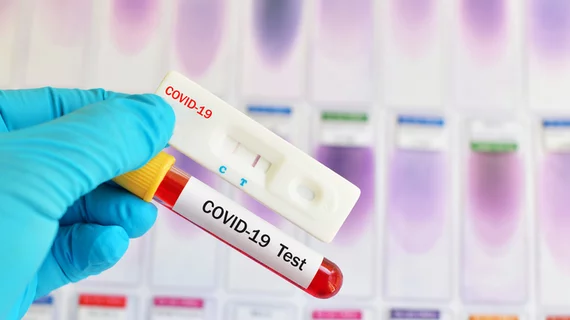‘Do-not-resuscitate’ orders for COVID-19 patients?
The survival rate for COVID-19 patients who require cardiopulmonary resuscitation for in-hospital cardiac arrest is just 2.9%, according to recent research out of Wuhan, China.
New findings published in Circulation: Cardiovascular Quality and Outcomes, however, highlight why there is still no reason to consider a blanket “do-not-resuscitate” order for COVID-19 patients in the United States.
With limited data available on cardiac arrest survival in the United States, the authors assessed survival data following cardiopulmonary resuscitation from more than 5,000 critically ill pneumonia and sepsis ICU patients. The team used data from the Get-With-The-Guidelines-Resuscitation registry of in-hospital cardiac arrest patients, focusing on the years 2014 through 2018. The media patient age was 65 years old, and all patients were receiving mechanical ventilation at the time of the cardiac arrest.
Overall, the rate of survival to discharge was 12.5% in those patients. The rate of survival with a cerebral performance category (CPC) of 1 or 2 was 9.2%, and survival with a CPC of 1 was 6.2%.
The team considered numerous variables that can impact a patient’s chance of survival. Worse outcomes were associated with older age, an initial rhythm of asystole or pulseless electrical activity (PEA) and the use of vasopressor medications. For younger patients not being treated with vasopressor medications, however, the outcomes were considerably higher.
“Such large variation in survival rates suggests that a blanket prescription of do-not-resuscitate orders in patients with COVID-19 may be unwarranted,” wrote first author Saket Girotra, MD, University of Iowa Carver College of Medicine, and colleagues. “Such a blanket policy also ignores the fact that early experience of the pandemic in the U.S. reveals that a about a quarter of COVID-19 patients are younger than 50 years of age and otherwise healthy. Cardiac arrest in such patients will likely have a different prognosis. Moreover, while asystole or PEA may be more common rhythms in the event of a cardiac arrest in COVID-19 patients due to the associated hypoxia and respiratory failure, patients may also develop ventricular arrhythmias due to associated myocarditis, and QTc prolongation (e.g., due to treatments like hydroxychloroquine) which may be reversible.”
The full analysis from Circulation: Cardiovascular Quality and Outcomes is available here.

